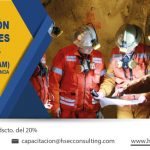Unmissable
For the first and only time in South America ....
Background
Safety and safety management are gradually changing from a reactive analysis and
management of error and failures (Safety I) to a proactive focus ‐I) to a proactive focus on the inherent properties on the inherent properties
of safe systems that support everyday work and thereby also prevent accidents from
happening (Safety‐I) to a proactive focus on the inherent propertiesII). In traditional safety management accidents and incidents are
analysed to find their causes and to eliminate these as far as possible. But preventing
failures is not enough. It is also necessary to understand how work goes well and to find
ways to support and augment it. The business case is simple: instead of spending time and
efforts to ensure that something does not happen, the same resources can be spent to
ensure that something happens – namely that work goes well. And when something goes
well, it can obviously not fail at the same time.
The introduction of Safety-II / Resilience Engineering to an organisation must
necessarily take the characteristics of that organisation into account. While the use of offthe-
shelf approaches may seem attractive in the short term, experience shows that it usually
is ineffective in the long term. Knowledge, methods, and training must be tailored to how
an organisation works in order effectively to address the bumps on the road to new
practices. The purpose of this compact tutorial is to give the participants an overview of
what adopting a Safety-II perspective means in practice.
14:00 – 14:15 Introduction – a very brief history of safety and safety thinking.
- This event has passed.
Tutorial on Safety-II in Practice

July
29
2019











